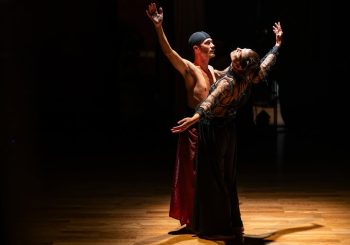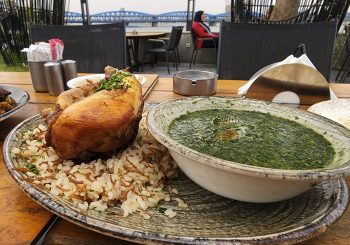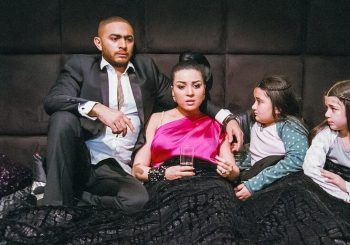When Arab women appear on Western reality shows, they carry more than just their own stories. They step into spaces where their identities are often misunderstood. Watching recent seasons of Love Island USA, Love Is Blind UK, and Love Is Blind France, a pattern emerges: Arab women are visible, yes, but rarely free from the burden of representation.
Take Huda Mustafa, for example, the Palestinian-American contestant on Love Island USA, the dating series where singles live together in a villa, pair up, and re-couple until one winning couple takes home a cash prize. From the moment she entered the villa, she was described as “too much” and “too intense.” Her openness, whether reacting to being love-bombed or confiding in a fellow contestant, was often reframed as manipulation.
These judgments echoed a familiar script that women of color, particularly Arab women, are cast as dramatic or unstable, even when reacting to genuine emotional strain.
In Love Is Blind UK, part of the global Netflix franchise where contestants date and get engaged without seeing each other until after a proposal, Moroccan Muslim contestant Maria Benkh spoke candidly about her expectations for a partner. She wanted someone traditional, a provider, and was unapologetic about it.
While her honesty sparked admiration in some viewers, others criticized her as demanding or outdated. The response revealed how quickly Arab women’s choices are policed, read either as symbols of empowerment or as evidence of cultural backwardness, rarely as personal preference.
Sarah, a contestant on Love Is Blind France, which follows the same experiment of blind dating and marriage proposals, chose a different approach. She refused to discuss certain intimate topics on camera, citing respect for her family and values. In doing so, she disrupted the mechanics of a format that thrives on disclosure. Some saw her restraint as refreshing integrity; others saw it as incompatible with the show. Either way, her boundaries became her storyline.
Arab identities are often distorted in Western media, according to a 2019 study published in the Journal of Muslim minority affairs. It found that U.S. college students frequently develop antagonistic perceptions of Arabs based on television portrayals.
Jack Shaheen, a media scholar known for his research on Arab representation in Western media, explored this issue in his documentary Reel Bad Arabs: How Hollywood Vilifies a People. Based on his analysis of over 900 Hollywood films, Shaheen showed how Arabs were overwhelmingly portrayed through negative tropes, as villains, terrorists, or cultural caricatures, shaping how global audiences come to view Arab identity on screen.
Meanwhile, a 2018 study titled The Role of Western Media in Distorting the Image of Arabs and Muslims found that Western coverage routinely associates Arabs with terrorism, oppression, or backwardness. These entrenched stereotypes shape how audiences interpret Arab women when they appear on screen, even in reality TV formats that claim to capture “real life.”
This Western reality TV stands in sharp contrast with Arab-produced shows like Dubai Bling or Love Is Blind: Habibi, where Arab women are portrayed without the lens of exoticism. Because these series are produced within the region, their choices, conflicts, and relationships are treated as part of everyday life rather than filtered through Western ideas of “difference.”
According to a 2014 survey by Northwestern University in Qatar conducted across six Arab countries, nearly half of Arabs watch American films, and many regularly consume Western media through platforms like Netflix, Hollywood, and social media.
By contrast, Western audiences tend to have limited exposure to everyday Arab culture, often shaped instead by stereotypes and selective portrayals in news or entertainment. This imbalance helps explain why Arab women who appear on Western reality TV often face backlash: their presence is treated as unusual or symbolic, rather than simply as part of normal, modern Arab life.
What links Huda, Maria, and Sarah is not merely their background but how the shows frame them. Editing, casting, and audience reactions turn differences into drama, making their Arab and Muslim identities central instead of allowing them to simply exist as individuals.
Until reality TV allows Arab women to be messy, complex, and ordinary without turning that into a cultural lesson, their presence risks being seen less as inclusion and more as spectacle.






Comments (0)